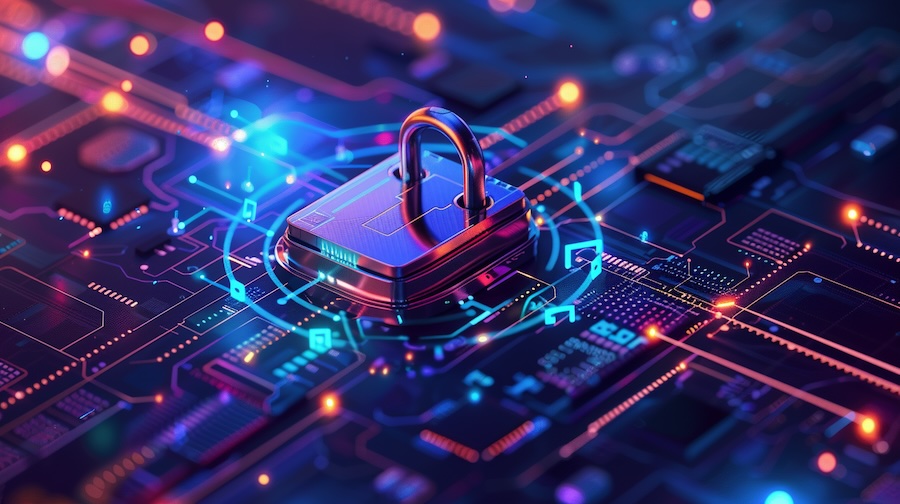We created this blog post for the EU-funded project “V2B: Creating NFT Opportunities on Metaverse for Art VET Trainees”, and our project reference number is 2022-1-DE02-KA210-VET-000080828. Coordinated by L4Y Learning for Youth GmbH in collaboration with Adana Cukurova Guzel Sanatlar and EMC Services Ltd, “Minting and Listing Your NFTs The Path to Monetizing Your Art” is prepared as a NFT Monetization Guide related to the training framework in the introduction post.
This module is tailored for young artists, newcomers in the creative field, and anyone curious about how to create and sell NFTs. This module, constituting an integral part of our NFT Monetization Guide, is tailored for young artists and newcomers to the creative field. Moreover, it caters to anyone interested in the creation and sale of NFTs.
We’re going to delve into the exciting world of creating and selling Non-Fungible Tokens (NFTs) to make money from art. Consequently, NFTs have become a hot topic in the digital art scene. Moreover, they offer artists a fresh way to showcase and sell their work in a unique and decentralized fashion. Therefore, engaging with NFTs opens up new avenues for artists to monetize their creativity effectively. The main goal of the module is to introduce the learners to the ins and outs of minting and listing NFTs, so anyone can confidently navigate the digital art realm and leverage NFTs to monetize their creative endeavors. You can also find more blog posts in our R2 category. It is one of the posts.
NFT Monetization Guide: Learning Objectives
By the end of this module, learners will be able to
- Explain what Non-Fungible Tokens (NFTs) are and how they fit into the art world.
- Grasp the advantages and potential drawbacks of creating and selling NFTs.
- Navigate the process of creating NFTs, from selecting the right blockchain platform to crafting your digital assets.
- Explore different platforms where anyone can list their NFTs and choose the one that best suits their art.
- Implement effective strategies to market and promote their NFTs, increasing their visibility and sales.
Key Points of NFTs: Essential for NFT Monetization Guide
Non-Fungible Tokens (NFTs), are a fascinating innovation in the world of digital assets. Unlike cryptocurrencies such as Bitcoin or Ethereum, NFTs represent unique items or pieces of content, making them non-interchangeable. Each NFT carries a distinct value, typically linked to digital art, collectibles, music, or virtual real estate. These tokens are built on blockchain technology, ensuring transparency and ownership authenticity. NFTs have gained enormous popularity among creators and collectors, allowing artists to monetize their digital work and offering buyers a tangible sense of ownership in the digital realm. However, concerns about environmental impacts and copyright issues have also arisen in tandem with their growth, highlighting the need for responsible usage and regulation in this exciting space. Understanding these key points is crucial for any NFT Monetization Guide, as it lays the foundation for successful NFT creation and sales.
Some key things to know about NFTs include:
- Uniqueness: Every NFT is one of a kind and can’t be duplicated or swapped with any other NFT, making them perfect for unique assets.
- Ownership: NFTs use blockchain technology (often on platforms like Ethereum or Binance Smart Chain) to record and confirm ownership. It’s like a super-secure digital ledger, showing who owns what.
- Metadata: NFTs often come with extra info about the item they represent, like details about the creator, when it was made, or any related content.
- Interoperability: NFTs are designed to work with various apps and platforms. They can represent ownership of digital art, collectibles, virtual spaces, music, video clips, in-game items, and much more.
- Ownership Transfer: You can buy, sell, or trade NFTs on online marketplaces like OpenSea or Rarible. The whole process is done through blockchain transactions, so you know it’s legit.
- Scarcity: NFTs can be created in limited quantities or as one-of-a-kind items, which can boost their value.
NFT Monetization Guide: Minting Process and Considerations
A critical part of any NFT Monetization Guide is comprehending the minting process of NFTs. Furthermore, in this chapter, learners will gain knowledge about the process of minting NFTs. Additionally, they will learn about different blockchain platforms that support NFTs and, importantly, the criteria for choosing the most suitable platform for their art. Learners will also gain perceptivity for pricing their NFTs effectively and setting kingliness structures to insure ongoing profit.
Minting an NFT involves turning the digital content into a unique digital asset securely recorded on a blockchain. Essentially, it’s akin to creating a one-of-a-kind digital collectible that remains tamper-proof. Fortunately, most NFT platforms and tools simplify the process significantly. To begin, users typically need to install a browser extension such as Metamask, which serves as their digital wallet. This wallet serves as their gateway to creating an account or logging into major NFT marketplaces.
Important Factors to Think About Before Minting an NFT
Creating an NFT involves more than just the technical process. Users need to consider several things to make smart decisions and get the most out of their digital creation. Here’s what users should keep in mind:
Ownership Rights and Copyright:
Before proceeding, ensure that you have the legal right to turn your content into an NFT. It’s crucial to respect copyright laws and obtain permissions from creators if necessary.
Content and Quality:
When considering minting an NFT, it’s important to reflect on the quality and uniqueness of your digital creation. Typically, high-quality and original content tends to perform better in the NFT market.
Metadata:
When minting your NFT, make sure to craft detailed and accurate metadata. This additional information provides context and background about your creation, ultimately enhancing its value.
Blockchain Choice:
Decide which blockchain platform you want to use for your NFT. Ethereum is popular, but there are alternatives like Binance Smart Chain, Flow, and Tezos. Consider factors like fees and environmental concerns.
Gas Fees and Minting Costs:
Be aware of the costs involved in creating NFTs on your chosen blockchain. High gas fees (transaction costs) on Ethereum, for example, can impact your overall costs.
Storage and Hosting:
Figure out where you’ll store your digital files associated with your NFT. Storing large files on the blockchain can get pricey, so look into decentralized storage solutions like IPFS.
NFT Standards:
Choose the right NFT standard for your project. Ethereum often uses ERC-721 and ERC-1155, but other blockchains have their own standards.
Smart Contracts:
If necessary, consider creating or utilizing smart contracts that align with your NFT’s rules, such as royalties for creators on future sales.
Royalties:
Decide on the percentage of royalties you want to receive when your NFT gets resold. It can be a nice ongoing income stream if your NFT gains value.
Marketplace Choice:
Before listing your NFT, take the time to research and select the NFT marketplace that best suits your needs. Factors to consider include the audience, fees, curation process, and the marketplace’s reputation.
Timing:
Think about when you want to release your NFT. Timing can affect demand, so launch strategically.
Promotion and Marketing:
Before proceeding, ensure that you have the legal right to turn your content into an NFT. It’s crucial to respect copyright laws and obtain permissions from creators if necessary.
Community Engagement:
Engage with the NFT community and potential buyers actively. By networking and connecting with like-minded individuals, you can effectively spread the word about your NFT.
Long-Term Strategy:
Consider your long-term goals. Is this a one-time thing, or do you plan to create more NFTs? Think about how NFTs fit into your overall creative and financial strategy.
Legal and Tax Implications:
Be aware of the legal and tax rules for minting and selling NFTs in your area. If it’s confusing, get advice from legal and financial experts.
Steps to Create an NFT
Creating an NFT involves turning your digital content into a unique digital asset and recording it on a blockchain. The steps may vary a bit depending on the platform and blockchain you choose, but here’s a general guide:
Prepare Your Digital Content
Before proceeding, take the time to carefully choose or create the digital content you want to turn into an NFT. This could encompass various forms, such as digital art, music, videos, virtual items, or any other digital creation.
Ensure Ownership Rights
Make sure you have the legal right to tokenize and sell your content. Respect copyright laws and get permissions if needed.
Choose a Blockchain Platform
Pick the blockchain platform for minting your NFT. Ethereum is popular, but there are others like Binance Smart Chain, Flow, or Tezos. Think about factors like fees and community.
Create a Digital Wallet
Once you’ve decided on your chosen blockchain, the next step is to set up a digital wallet. This wallet will be essential for storing your NFT and interacting with the blockchain. Popular options include MetaMask for Ethereum and Trust Wallet for Binance Smart Chain.
Fund Your Wallet
Before proceeding with minting your NFT, it’s crucial to ensure that your wallet contains the necessary cryptocurrency (usually Ether for Ethereum-based NFTs). This will cover the minting fees and transaction costs associated with the process.
Choose an NFT Standard
Select the NFT standard that fits your project. ERC-721 and ERC-1155 are common on Ethereum, but other blockchains have their own.
Create Metadata
Prepare metadata for your NFT. This includes details like the title, description, creator info, and a link to the digital file. You can often host metadata on IPFS or a similar decentralized storage system.
Develop a Smart Contract (Optional)
If needed, consider creating a custom smart contract that defines your NFT’s rules and features. However, in many cases, you can also utilize existing smart contracts.
Mint Your NFT
Head to an NFT marketplace or platform that supports minting, such as OpenSea, Rarible, or Mintable.
- Once there, connect your digital wallet to the platform.
- Then, follow the platform’s steps to mint your NFT. This typically involves uploading your digital file, adding metadata, setting royalties, and paying minting fees.
Review and Confirm
- Double-check all the details of your NFT listing, including metadata and fees.
- Confirm the minting process, which will create a transaction on the blockchain.
Wait for Confirmation
Patience is key here. Wait for the blockchain to confirm the transaction. It might take some time, depending on network activity. Once it’s confirmed, your NFT is officially minted and recorded on the blockchain.
Market and Promote
After minting, promote your NFT through social media, online communities, and other marketing channels to attract potential buyers.
Manage Your NFT
Once your NFT is live, it’s important to actively manage it. Keep a close eye on its performance, including sales and royalties. Many marketplaces provide dashboards where you can track your NFT’s progress
Listing NFTs: Platforms and Strategies
An essential aspect of the NFT Monetization Guide involves selecting the right platforms and strategies for listing your NFTs. In this chapter, our focus is on exploring the platforms and strategies for listing NFTs. Learners will delve into popular NFT marketplaces such as OpenSea, Rarible, and SuperRare. They will gain an understanding of their features, fees, and community dynamics. Listing NFTs marks a crucial step in the process of monetizing your digital creations and making them available to collectors and investors. Below are some popular platforms and strategies for listing NFTs:
Popular NFT Listing Platforms:
- OpenSea: Recognized as one of the largest and most popular NFT marketplaces, OpenSea supports a wide range of NFT standards, including ERC-721 and ERC-1155. It boasts features such as auctions, fixed-price listings, and bundle sales.
- Rarible: Rarible is another popular NFT marketplace known for its decentralized governance model. It allows creators to mint and sell NFTs with customizable features and royalties.
- SuperRare: Renowned for its exclusive focus on digital art NFTs, SuperRare showcases high-quality, limited-edition artwork, garnering recognition in the art world.
- Foundation: With a focus on community-driven creativity, Foundation empowers creators to tokenize their work and engage with their audience through auctions and social features.
- Nifty Gateway: Nifty Gateway specializes in digital collectibles and art. It offers unique features such as “drops,” where creators release NFTs in timed sales events.
- Decentraland Marketplace: Specifically catering to individuals interested in virtual real estate and digital assets within virtual worlds, Decentraland hosts its own marketplace for trading NFTs related to its virtual metaverse
Strategies for Listing NFTs:
Quality and Uniqueness:
Ensure that your NFTs are of high quality and unique. Additionally, unique or limited-edition pieces tend to attract more interest and potentially higher bids. Moreover, emphasizing the exclusivity of your NFTs can further enhance their appeal.
Storytelling:
Create a compelling story or narrative around your NFTs. Share the inspiration, creation process, and backstory with potential buyers to connect on a deeper level. Furthermore, weaving an engaging narrative can evoke emotions and establish a stronger connection with your audience.
Social Media Promotion:
Leverage social media platforms like Twitter, Instagram, and TikTok to promote your NFT listings. Engage with your audience, share behind-the-scenes content, and build anticipation. Additionally, utilizing relevant hashtags and engaging with trending topics can help increase visibility and reach.
Collaborations:
Collaborate with other creators, artists, or influencers to cross-promote your NFTs. Joint projects can expand your reach and attract a broader audience. Furthermore, leveraging the existing fan bases of collaborators can lead to increased exposure and interest in your NFTs.
Auctions vs. Fixed Prices:
Consider your pricing strategy. Auctions can generate excitement and competition among buyers, while fixed prices offer predictability.
Community Engagement:
Engage with the NFT community on forums, Discord channels, and Twitter. By building a strong network and interacting with potential buyers, you can significantly boost your visibility. Additionally, fostering meaningful connections within these communities can lead to valuable collaborations and opportunities for growth.
Limited Editions:
Introducing limited editions of your NFTs not only instills a sense of scarcity and urgency among collectors but also has the potential to drive up demand significantly.
Royalties:
Set reasonable royalty percentages for yourself as the creator. y doing so, you ensure you continue to benefit from secondary sales of your NFTs. Additionally, establishing fair royalties helps maintain a positive relationship with buyers and encourages ongoing support for your work.
Responsive Customer Service:
Provide excellent customer service to buyers. Respond to inquiries promptly and professionally. Moreover, offering exceptional customer service can enhance your reputation as a trustworthy seller and lead to repeat business.
NFT Drops:
Consider hosting “drops” or timed releases of your NFTs to create a sense of excitement and exclusivity. Furthermore, timed releases can create a sense of urgency, prompting potential buyers to act quickly.
Verification and Provenance:
Prove the authenticity and provenance of your NFTs. Share information about your work’s history and any relevant certificates of authenticity. Additionally, providing verification enhances buyer confidence and trust in your NFTs.
Long-Term Planning:
Think beyond your initial listings. Develop a long-term strategy for creating and selling NFTs, including future projects and collaborations. Moreover, long-term planning ensures you stay ahead of trends and remain competitive in the evolving digital marketplace.
NFT Monetization Guide: Marketing and Promotion of NFTs
This chapter delves into marketing and creation strategies to enhance the visibility and deals of NFTs. Learners will learn about erecting their brand as an artist, using social media platforms, engaging with the NFT community, and uniting with influencers and collectors. The chapter also covers the significance of creating a compelling narrative around the artwork and exercising failure and exclusivity to drive demand.
What Is NFT Marketing?
NFT marketing involves utilizing Non-Fungible Tokens (NFTs) to promote your creations effectively. Through the use of NFTs, which are exclusive digital assets stored on blockchain platforms, you can captivate your audience, enhance profitability, and establish a presence in the emerging tech landscape. To sell your NFTs effectively, consider implementing the following strategies:
Be Social:
Establish a presence on social media platforms such as Twitter, Instagram, TikTok, and LinkedIn, where NFT enthusiasts and potential buyers gather. Share updates and your creative process, and use relevant hashtags.
Tease and Engage: Additionally, tease and engage by building anticipation through sharing teasers and behind-the-scenes content. Show your creative process, sketches, or even live streams.
Community Engagement: Dive into NFT-focused online communities, forums, and Discord channels. Get involved in discussions, showcase your work, and consider interviews or AMAs.
Collaborate: Moreover, collaborate with other artists or creators in the NFT space for wider exposure. Explore cross-promotion with influencers or collectors.
Email Marketing: Additionally, consider running targeted paid ads on social media and NFT websites. Build an email list and send newsletters with NFT updates and exclusive offers.
NFT Marketplaces: Begin by listing your NFTs on platforms such as OpenSea or Rarible, ensuring to optimize your listings with compelling descriptions and images.
Virtual Exhibitions: Utilize platforms like Decentraland to host virtual art exhibitions, subsequently promoting them through social media and press releases.
Press Releases: Additionally, write and distribute press releases to NFT-related outlets and collaborate with NFT-focused journalists for features.
Engage Your Community: Moreover, respond to comments and foster a sense of belonging within your community.
Consider Paid Ads: Run targeted paid ads on social media and NFT websites. Use retargeting to re-engage potential buyers.
Host Giveaways: Reward your community with NFT airdrops and giveaways. Promote these events on social media.
Livestream Releases: Create excitement by livestreaming your NFT releases for real-time interaction.
Analyze and Adapt: Use analytics to refine your marketing strategies based on performance insights.
These marketing strategies are an essential component of our comprehensive NFT Monetization Guide.
NFT Monetization Guide: Conclusion
In conclusion, this module offers a comprehensive journey into the world of Non-Fungible Tokens (NFTs), equipping budding artists and creative enthusiasts with the knowledge and tools to monetize their art in this exciting digital landscape. We’ve covered key points about NFTs, from their uniqueness and blockchain-based authenticity to the considerations before minting, the minting process itself, and listing strategies on popular platforms. Moreover, we’ve explored effective marketing and promotional strategies to boost visibility and sales. As NFTs continue to reshape the creative industry, understanding these fundamentals and staying engaged with the evolving NFT community can pave the way for success in the world of digital art and collectibles.
References and Resources
- Atkinson, S., & Thrush, T. (2021). Non-fungible tokens (NFTs): What are they and why are they important? Journal of Digital Media Management, 9(3), 236-242.
- Li, J., & Chen, C. (2021). An empirical study of NFTs in the art market: NFT bubbles, market efficiency, and investor behaviors. Journal of Economics and Business, 115, 1-19.
- Mims, C. (2021). Explaining NFTs: A primer on digital scarcity. MIT Technology Review. Retrieved from https://www.technologyreview.com/2021/03/09/1020603/non-fungible-tokens-nfts-explained-ethereum-blockchain/










